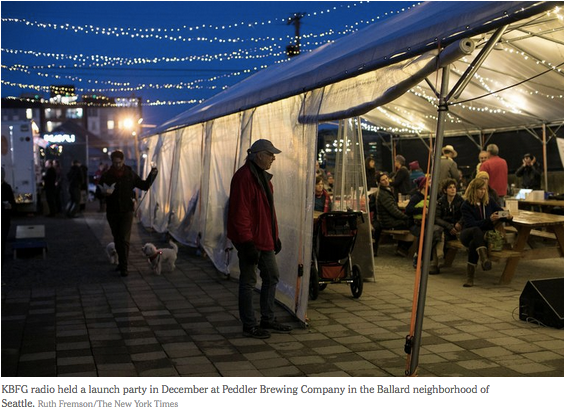SEATTLE — A knowledge of geography is essential if you are running a tiny, 100-watt radio station. Hills are bad, for example, as are tall buildings. Salt water, though, which lies at this city’s doorstep, can boost a radio signal for miles, like a skipped rock.
For a low-power FM radio station, anything measurable in miles is good.
But on a recent Thursday night, one station, KBFG, was struggling to even get on the air. The station’s signal, audible since November in an area measurable in square blocks, had flatlined. The Ballard High School basketball team was about to take the court and the live play-by-play was in doubt.
“We’re bootstrapping it,” said Eric Muhs, a physics and astronomy teacher. Headphones were slung around his neck, and a mop of unruly gray hair came further undone as he leaned into his laptop trying to fix a software glitch. But Mr. Muhs, 60, one of KBFG’s founders, admitted that the stakes for failure were relatively low. “Almost nobody knows that we exist,” he said.
Low-power nonprofit FM stations are the still, small voices of media. They whisper out from basements and attics, and from miniscule studios and on-the-fly live broadcasts like KBFG’s. They have traditionally been rural and often run by churches; many date to the early 2000s, when the first surge of federal licenses were issued.




